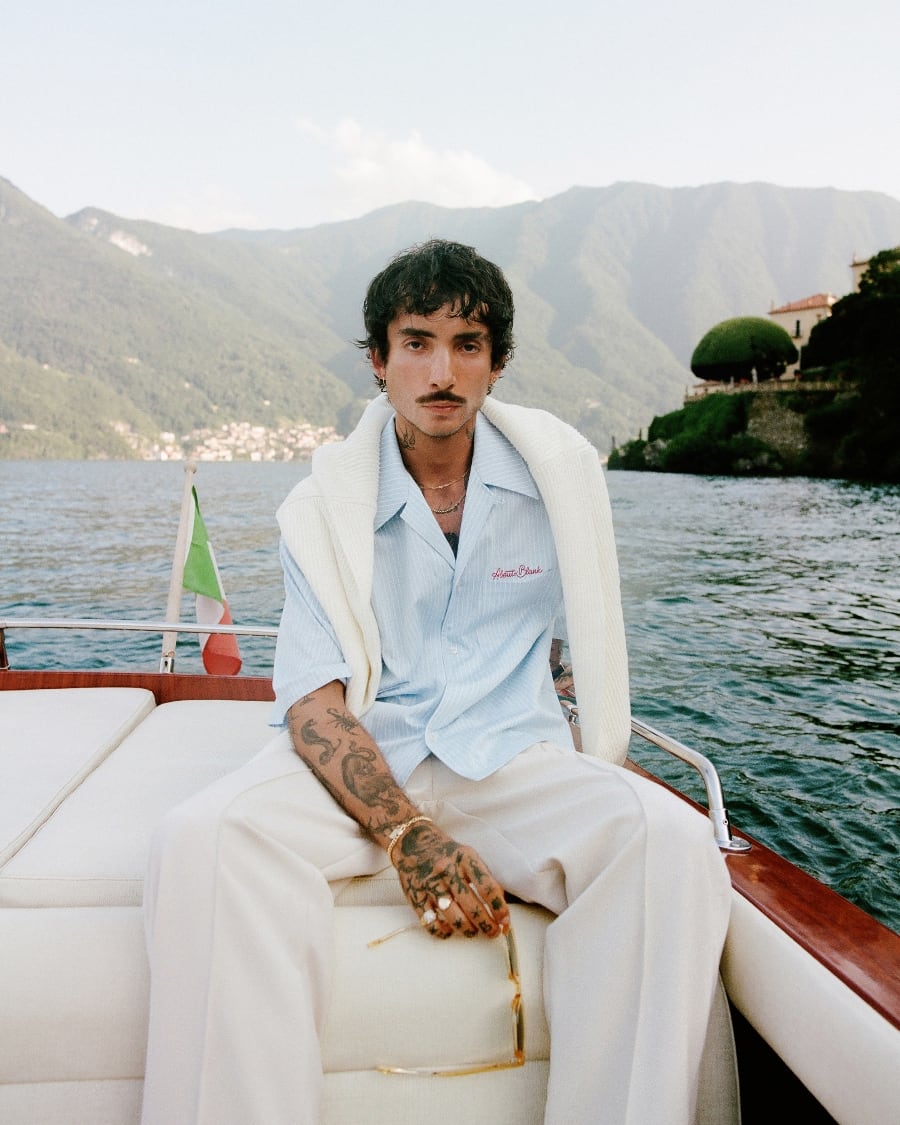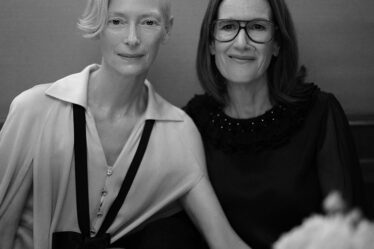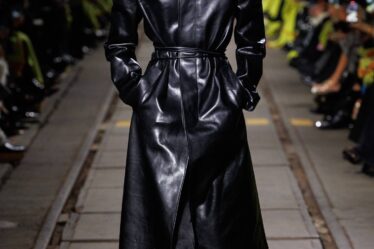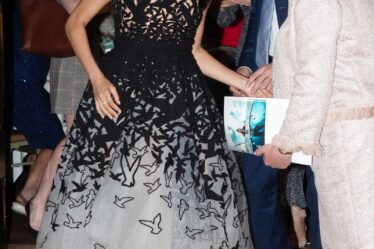
Last January, in an effort to grow its business, three-year-old menswear brand About Blank started releasing monthly lookbooks. Initially shot on an iPhone, the photos were set against simple backdrops — wood walls or shelves. On TikTok and Instagram, it shared a behind-the-scenes peek with videos from the set.
The strategy was a hit. More than 10,000 people signed up for a membership on its website, and by the end of 2023, About Blank’s sales had grown 500 percent over 2022. But it was also something of a sure thing — that same formula has been working for brands like Aimé Leon Dore for years.
“There’s no secret that we want to be in that realm of brands like Kith or ALD. We want to be fitting into that sort of vibe, but we wanted to do it our way,” said co-founder Jack Henderson. “When someone is so big and doing it so well, then there’s obviously a reason why other people are looking at that for inspiration.”
About Blank has moved away from this look for its recent campaigns shot on locations like Italy and Spain. But the brand is hardly alone in releasing imagery featuring unknown models against plain backdrops. Brands including Represent and Cole Buxton have done the same. It’s become the defacto playbook for menswear start-ups today.
That’s also meant that today, a lot of menswear marketing mostly looks the same. Within menswear circles, there’s a growing criticism — that brands are trying to appeal to customers who are conditioned by content creators and shopping lists to look for guides on how to dress well. An anonymous article published in the Substack newsletter Deez Links, fittingly titled “I hate menswear,” went viral in April and summarised the feeling: “These days, everyone’s personal style can be reduced to a Starter Pack.”
“[Consumers] just want a recommendation on a silver platter and you have to kind of play that game to some degree to be successful,” said Lawrence Schlossman, co-host of the menswear podcast Throwing Fits. “We’re in an era where good taste has been democratised … there’s obviously an element of taste that can’t be taught.”
There’s several reasons explaining the homogeneity of menswear marketing today. Right now, it’s indie labels with limited marketing budgets that are driving the conversation; the ALD playbook offers a relatively low-cost way to feed demand for social media content. Plus, despite its critics, the formula appears to be working. The global menswear market is on pace to grow 6 percent in year on year exchange rates to $471 billion in 2024, according to estimates from research firm Euromonitor International.
But there’s a danger in ignoring the need for creativity. Look at Nike, which has seen sales suffer amid complaints of lacklustre advertising and an overall lack of innovation. There’s reason to believe the same could happen in menswear: Euromonitor once projected global menswear sales to reach $524 billion in 2025; it’s downgraded that prediction to $498 billion. While the lower estimate is mostly due to inflation and the broader luxury slowdown, bland marketing can exacerbate a downward trend.
Those realities should encourage brands to experiment, said Tony Wang, founder of luxury consultancy Office of Applied Strategy. About Blank is already pursuing more unique image making as its able to spend more on its creative output.
“This is the year where a couple of more innovative brands will take a risk and some of that will pay off,” Wang said. “This is the year where you can capitalise on disruption a lot more.”
The Starter Pack Paradox
The uniformity in today’s menswear marketing is illustrative of a broader change in the sector.
In the last 20 years, menswear has transitioned from an obsession with shrunken suits to streetwear-focused logomania to brands now blending tailoring with casualwear in neutral tones. During the streetwear era of the 2010s, massive brands like Balenciaga and Virgil Abloh’s Louis Vuitton set the standard with flashy, celebrity-filled and conversation-starting advertising. Now, the dominant brands have less resources and are playing it safer in an uncertain economy.
“We went through this loud phase of menswear, and fashion in general, where everything was just sort of maximal,” said Josh Peskowitz, brand consultant and former men’s fashion director at Moda Operandi and Bloomingdales. “The marketing was quite different from one brand to another, but you’re talking about really big budgets there. When you talk about the marketing for these smaller brands, it’s on a white background because they don’t have any money.”
That’s led to the prevalence of “starter pack” lookbooks where the focus is on clothes styled in easily replicable ways, instead of campaigns that challenge consumers to interpret how to put a look together themselves.
It helped too that this instructive imagery, though somewhat banal, appeared to drive customer retention at a time when consumers are less brand loyal. For example, 13-year-old menswear label Represent sends email marketing to customers instructing them on how to style its most popular items. The brand, which does more than $100 million in annual sales, generates around 55 percent of its sales from repeat customers.
“We’re so engaged with our consumer,” said George Heaton, Represent’s co-founder and creative director. “The fundamentals is that it is a business and we’re able to provide products from footwear to headwear.”
Pursuing Individuality
Menswear start-ups likely won’t completely abandon sales-generating marketing tactics, but some are starting to invest in the type of storytelling that will set them apart from their competitors. And though menswear doesn’t have the same history of constructing a fantasy in marketing as womenswear does, the labels that indulge in a bit of myth-making will avoid boring consumers down the line.
“It’s about understanding how to be very savvy and smart and understand on a deeper cultural level, what is the meaning of our menswear,” Wang said. “How do you reframe it to give it new life?”
Brands are starting with replacing simple backdrops with photogenic locales that help shape a narrative around their clothes.
After last year’s strong performance, this year, About Blank quadrupled the budget for its shoots, and began designing collections inspired by particular locations, and then shooting them there. A recent summer capsule collection featuring knit and cotton poplin shirts meant for an Italian holiday was shot in Lake Como. Henderson said he believes that strategy will have a stronger longer-term impact. About Blank is targeting more than 40 percent year-over-year sales growth to £4 million ($5.3 million) in 2024, and is aiming to double sales in 2025.
Start-ups without hefty marketing budgets are experimenting with new technologies to evoke emotional responses. Represent, for instance, launched a fall campaign at the end of August featuring an AI-generated choral soundtrack, meant to capture the same energy as when an artist performs during a runway show, Heaton said.
“We’ve not felt the need to go out with full billboard campaigns all over the world that would cost us millions,” Heaton added. “It’s not something that we’re willing to take the risk on just yet.”
And to stay away from an industry-wide aesthetic, brands are finding backdrops that fit their brand the best, even using their own imagery as inspiration.
For its upcoming fall 2024 campaign, Rowing Blazers will take cues from its fall 2022 lookbook that was shot at The Explorer’s Club in New York against wooden bookshelves and mantles. The campaign, which will capture the brand’s first collection since it was acquired by private equity firm Burch Creative Capital in February, is meant to double down on Rowing Blazers’ humorous take on classic American prep, said the brand’s founder and creative director Jack Carlson.
“It’s really useful in a situation like this to be able to be self-referential … and say what really worked and what also feels like it’s exactly what the Rowing Blazers brand is all about,” Carlson said. “That’s the best thing that any brand can do to stand out.”



